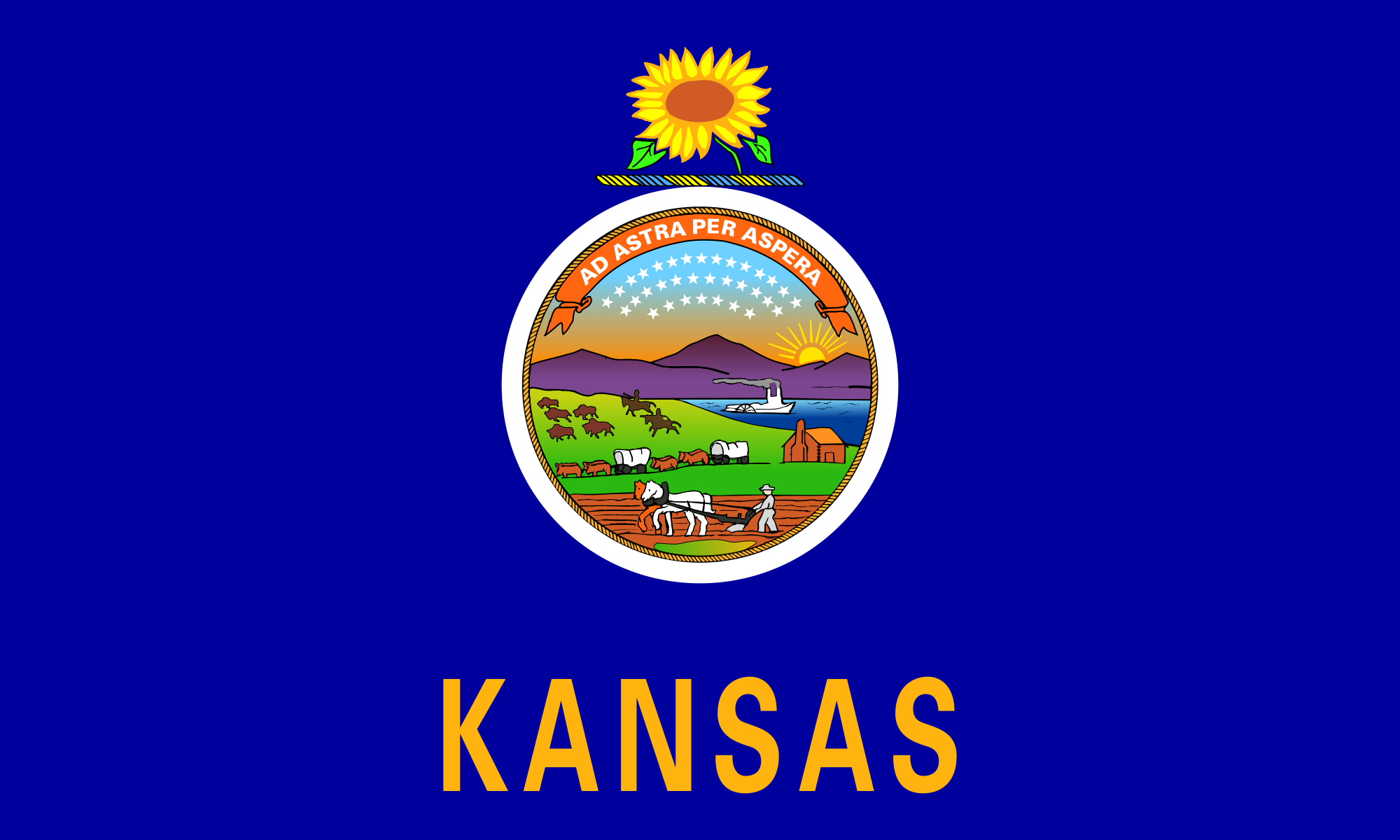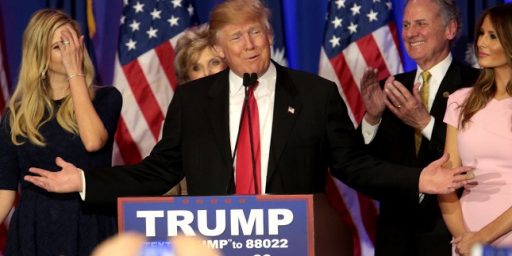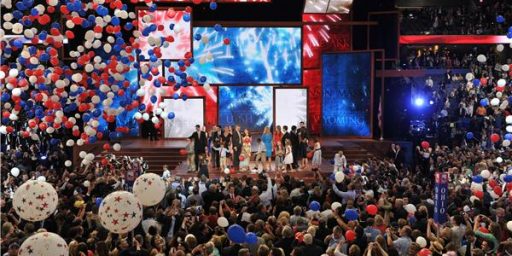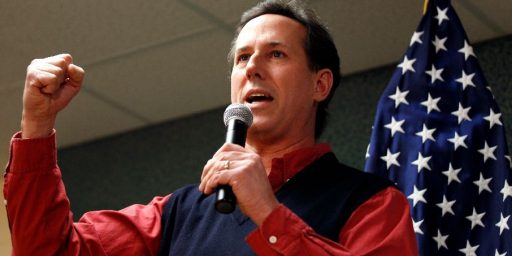Kansas Democrats Dump Caucuses, Implement Ranked-Choice Voting
For 2020, Kansas Democrats are making some interesting changes to how they will have a say in he race for the Democratic nomination.

Kansas Democrats have taken the steps to reform the way that they participate in the process of nominating a Presidential candidate, and they’re both steps in an interesting and potentially positive direction:
If you’re a Kansas Democrat or become one before the 2020 election, it will be a lot easier for you to help pick the party’s presidential candidate.
Last week, the state party submitted its plan to the Democratic National Committee to ditch Kansas’ traditional caucus system in favor of a primary election with ranked-choice voting.
Kansas Democratic Chairwoman Vicki Hyatt said she thinks the new system will make it easier to vote and increase Democratic turnout. “I’m hoping it will generate a lot of energy,” she said.
It won’t be an official state-run election, but it will have more of the trappings of one than the previous caucus process — which has been used since 1992 to divvy up delegates between Democratic candidates.
Some highlights of the plan:
▪ The primary will be held from 10 a.m. to 4 p.m. on May 2, a Saturday.
▪ Voting will be by “ranked choice.” Voters will vote for their first, second, third, and so forth choices down the ballot.
▪ In the counting process, if a candidate gets less than 15 percent of the first-choice votes cast, those votes will be redistributed to the candidates who were marked as second choice. The process continues until only candidates with 15 percent or more of the votes are left. Then the delegates will be awarded proportionally, based on the candidates’ percentage of the final tally.
▪ The party will establish “voting centers” across the state where Democrats will be able to gather and cast their ballots.
▪ Every state Senate District will have at least one voting center. Low-population rural areas could have more than one if the Senate district has more than four counties.
▪ Only registered Democrats can vote. But non-Democrats can register or reregister at the voting center on the day of the primary and then cast a ballot.
▪ To encourage young voters, 17-year-olds who will be 18 by the general election in November will be allowed to vote in the primary.
▪ Photo ID will be required, to comply with state law. However, same-day registrants will be given a federal voter registration form so they won’t have to provide the documented proof of citizenship — such as a birth certificate or passport — required with state forms.
The old-style Democratic caucus involved voters going to a meeting hall, listening to speeches and then physically separating into groups to be counted for one candidate or another. It involved a lot of standing around.
Brandon Johnson, a Wichita city councilman and the vice-chairman of the state Democrats, said the primary election will be more orderly and easier for voters to navigate.
While there will probably still be some speeches to be heard, voters will also have the option to show up, cast their vote, and leave. In 2008 and 2016, when the nomination process was hotly contested, the caucuses proved to be chaotic when the number of participants overwhelmed the available space at numerous caucus sites.
Hyatt said the strong sentiment as the party gathered to plan for 2020 was “We can’t do what we did last time.”
There are two aspects to the changes that are being made here, both of which I think are fairly positive and certainly worth exploring. Up until now, both the Republican and Democratic parties have chosen their delegates to their respective national conventions roughly similar in process to the Iowa Caucuses. In the last election, when both parties had an open field, Ted Cruz ended up winning on the Republican side and Bernie Sanders ended up winning on the Democratic side. In both cases, of course, voter participation was far below what you’d expect to see in a primary.
‘As I’ve noted before — see here and here especially — caucuses are an inherently flawed and arguably anti-democratic way to select delegates. This is due to the fact that such a system makes it difficult if not impossible for people who are unable to get to a caucus location on a given weeknight to participate in the candidate selection process. It also makes it easier for supporters of otherwise marginal candidates to take over the delegate selection process in a way that they would likely be unable to do in a traditional primary. As I noted earlier this months, Iowa Democrats are seeking to address this issue by instituting what they are calling ‘virtual caucuses’ that will allow people to participate via online forums. Kansas Democrats are going the other route by eliminating caucuses altogether. Given all the flaws I noted, it’s clear that Iowa’s idea, while interesting, doesn’t address the problem entirely. Therefore, the decision to move beyond caucuses is a good idea in my mind.
That brings us to the second change, the introduction of ranked-choice voting (RCV), which is sometimes also referred to as Instant Runoff Voting (IRV) although there are some differences between the two systems not worth getting into detail about for the purposes of this post. OTB’s own Steven Taylor has written several times in the past about both systems as well as other potential structural changes to the voting process such as multi-member districts. In the end, though, RCV and IRV are identical in that they are meant to be alternatives to the current “first past the post” voting system we use today in most states except those that utilize runoff elections in cases where a candidate fails to get over 50% of the vote in a first round.
In the end, RCV is a fairly simple system to understand notwithstanding the claims of critics. At the ballot box, voters are given a list of the candidates who have qualified for the ballot and is asked to rank them from first to last in terms of who they prefer. In order to win a race under the rules that Kansas Democrats will apparently be operating under, which is largely similar to what has been proposed by political scientists who have written on the subject, a candidate needs to get a majority of the vote rather than just a plurality of the vote that makes it possible to win in most states.
What happens next is essentially similar to a runoff election, except it gets conducted instantly or immediately after Election Day rather than requiring another election weeks later. The candidate with the fewest top-ranked votes is eliminated and the votes that candidate received are given to whichever candidate the voter ranked as second. The process continues until one candidate has a majority of the vote, a process that could take one round or could take several rounds.
This process was used in the 2018 election in Maine and by all accounts was a success. In that state, though, vote counting is done manually meaning it took roughly a week to determine the winner in the single Congressional race where it became necessary to use it due to the inability of any candidate to get a majority of the vote in the first round on Election Night. By all accounts, though, the process went smoothly despite the protests of opponents. Additionally, there’s no reason why this process could not or should not be done electronically, which would likely mean that determining a winner would take a far shorter amount of time than it did in Maine.
Advocates for ranked-choice voting have argued that this form of voting forces candidates to reach out to a broader group of voters than they might have under a system where a candidate can win with a plurality of votes and that it also gives voters the opportunity to give support to candidates beyond the “mainstream” choices or the candidates that happen to have the loudest voices and the most money. Additionally, advocates contend that running for office in a ranked-choice system makes it more difficult for candidates who focus mostly on appealing to their hardcore base and on attacking their opponents. This is because it is far riskier to run negative campaigns against your opponents when you potentially may have to appeal to at least some of their supporters to rank you second or third in order to get you to the 50-percent-plus-one needed to win the election. Finally, it is hoped that such a system will lead to candidates more willing to compromise to get legislation passed and to govern in general. Whether all of this works out the way advocates hope remains to be seen, but it seems clear that it’s worth giving it a try at the state-level in even the limited fashion it will be next year in Kansas. If it works out well, then perhaps it will lead other states to give it a try as well.





Awesome.
Actually, the difference between RCV (as a broader category) and IRV is highly relevant. This is not IRV, which uses RCV and sequential elimination to produce a single winner. It is still proportional allocation of delegates (as required by national party rules), but first eliminating those who fall below 15% in the state, without throwing their votes away (i.e., transferring to some candidate ranked by the voter that is over 15% in first preferences).
Not that there is likely to be such a fragmented field that late in the process. But the concept is a good one, and very different from IRV (such as Maine introduced in 2018 for some offices).
As I’ve mentioned repeatedly, a poll from Feb. 2016 found that when Republican voters were asked to choose between Trump and Rubio, or between Trump and Cruz, Trump lost to either one of them by double digits. That suggests that Trump’s seemingly insurmountable polling lead was an artifact of the large and divided field: even though some of his rivals may have been individually more popular than he was, they were effectively becoming spoilers toward each other, enabling the less-popular candidate to win.
A ranked-choice system would prevent that sort of outcome.
Yay for Ranked Choice Voting! Now they just need Jungle Primaries too. =)
@Stormy Dragon:
I disagree about jungle primaries. Each party should be able to pick their nominee and put them up in the General Election. California’s system is a joke and so is Louisiana’s,
@Doug Mataconis: …Each party should be able to pick their nominee…
How much control over who does the picking should each party have?
Closed primaries? Open primaries? Caucauses?
Should this all be left up to the States or should we have some sort of National Primary?
As I said on Steven’s thread (at great length ;-), the mass exodus of states leaving the caucus system is largely due to Bernie attempting to shoot his perceived enemies only to find the gun was pointing the wrong way:
Watch for candidates to print tickets recommending how their supporters should vote. For example if the primary is a two horse race, each of the leading candidates would advise their supporters to number the other one last. This will then lead to all sorts of deal-making about who they put at #2. And of course all the candidates who know they won’t win will try to get something in return for making one of the two leaders their second choice.